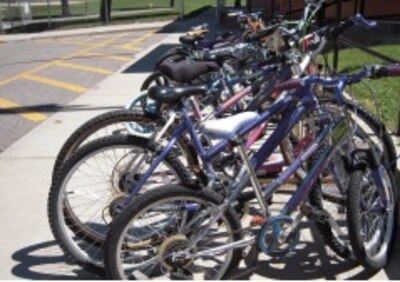
Behind motor vehicles, bicycles are tied to more childhood injuries than any other consumer product. So, take some time to brush up on ways to keep your children safe on their way to and from school.
Bicycle safety
- Make sure the student is wearing a helmet. Helmets can reduce the risk of head injury by as much as 85 percent.
- Obey the rules of the road; the rules are the same for all vehicles, including bicycles.
- Stay on the right-hand side of the road and ride in the same direction as traffic.
- Know and use appropriate hand signals.
- Talk with your children, and choose the safest route between home and school and practice it with children until they can demonstrate traffic safety awareness.
Walking safety
- Supervise young children walking or biking to school or as they wait at the school bus stop.
- Ensure your child leaves early enough to get to school 10 minutes prior to the start of school.
- Use the same route every day and avoid shortcuts.
- Go straight home after school.
- Students should use public sidewalks and streets when walking to school.
- Choose the safest route between home and school and practice walking it with children until they can demonstrate traffic safety awareness.
- Walk to school with other students. Strength in numbers.
- Teach children to recognize and obey traffic signals and pavement markings.
- Cross at designated crosswalks, street corners and traffic controlled intersections.
- Always look both ways before crossing the street and never enter streets from between parked cars or from behind shrubbery.
- Walk, don’t run, across intersections. A flashing “walk signal” or the crossing guard in the street does not mean it’s safe to cross.
- Tell your child to avoid talking to strangers.
- Never get into a vehicle with a person – even if your child knows that person – without parent permission. If a stranger approaches, tell a trusted adult such as a parent or teacher.
Things to avoid
- Allowing your child to be at school any earlier than 15 minutes prior to the start of school as crossing guards, teachers, or aids may not be at the school to monitor your child.
- Letting your child go to friend’s houses without getting permission.
- Walking to school using canals, alleys, and cutting through yards or open fields.
- Walking alone as they will be an easier target for harassment, bullying, or stranger approach.
- Running to cross the street or intersection or cross in the middle of the block especially in heavy traffic areas. Never let children under age 10 cross the street alone.
- Talk to strangers or get within reach of that person. That includes taking a ride from a stranger or someone they know without parent’s permission.
Source: State of Michigan and compiled by EdNews Parent intern Alex McNa
About our First Person series:
First Person is where Chalkbeat features personal essays by educators, students, parents, and others trying to improve public education. Read our submission guidelines here.
